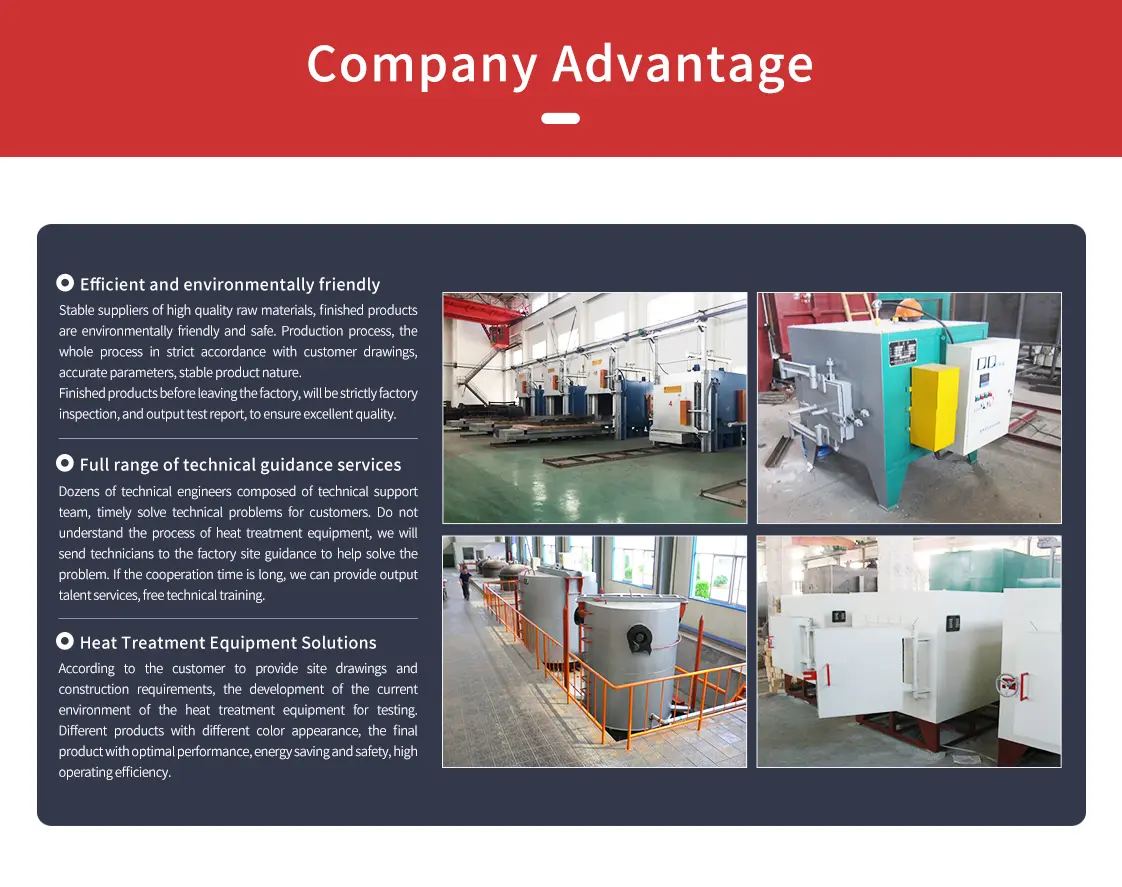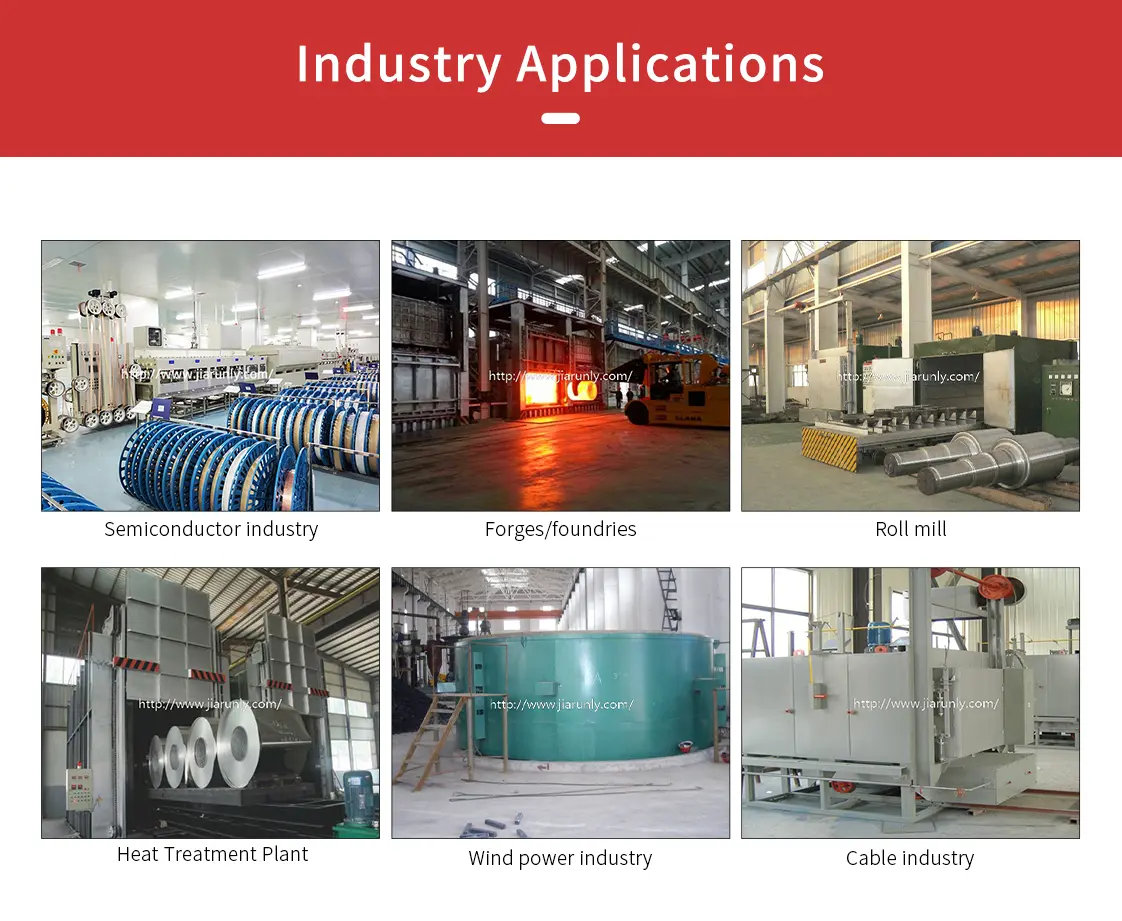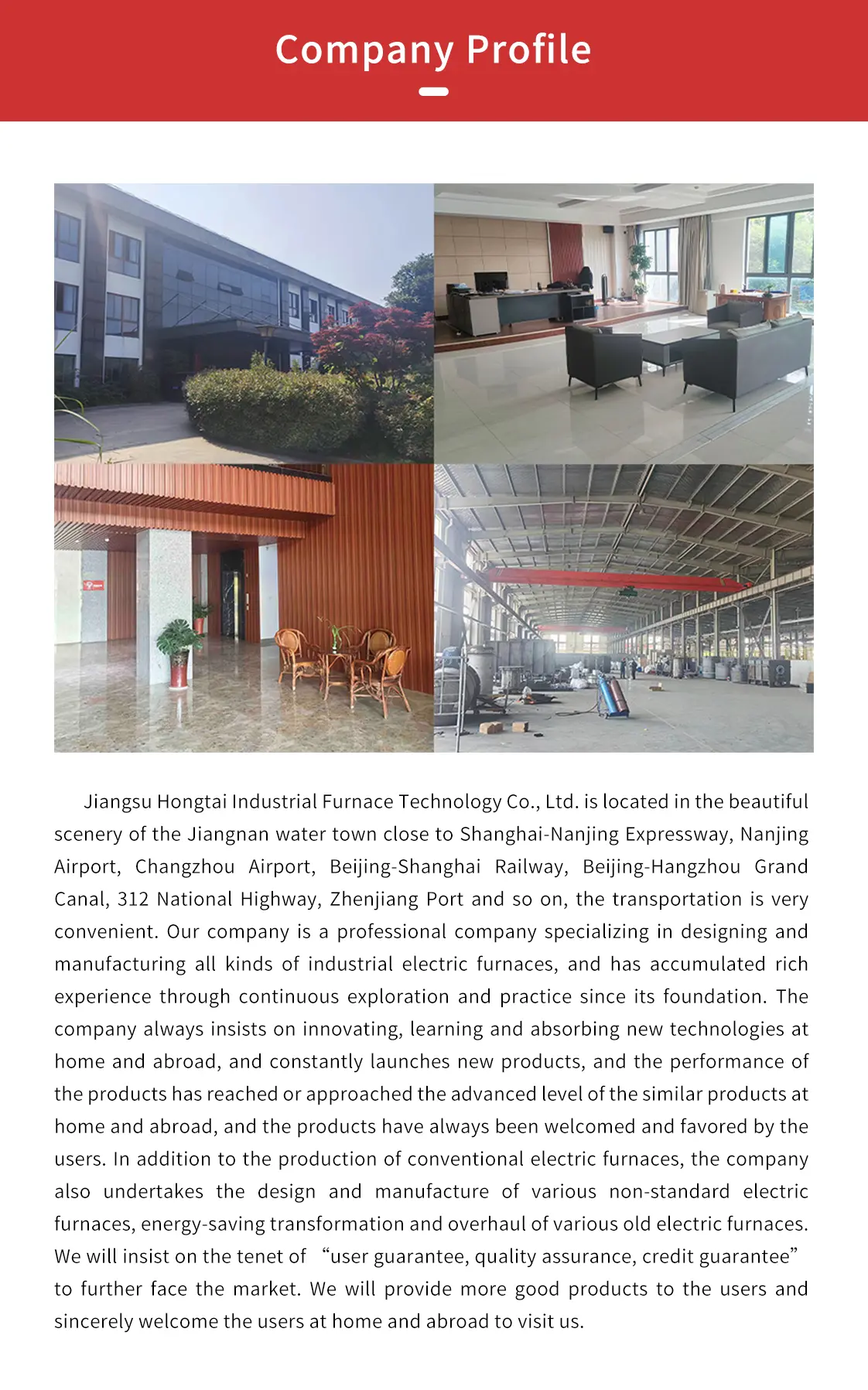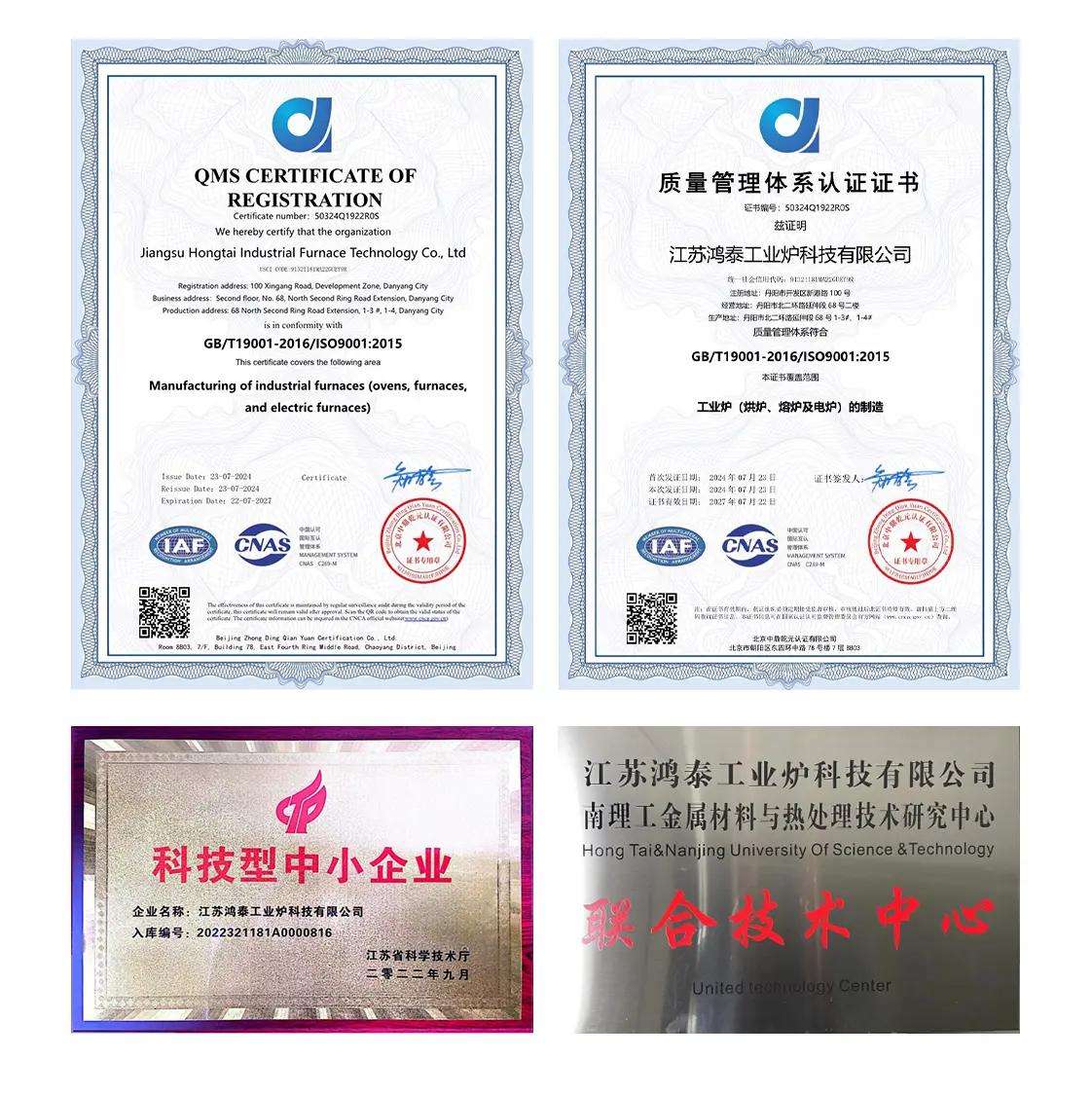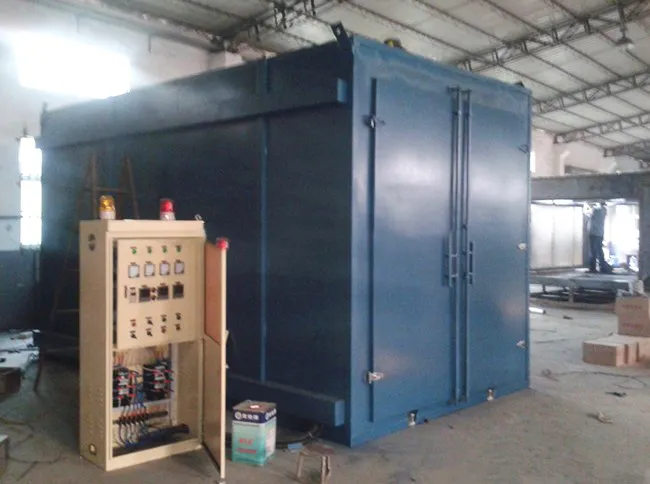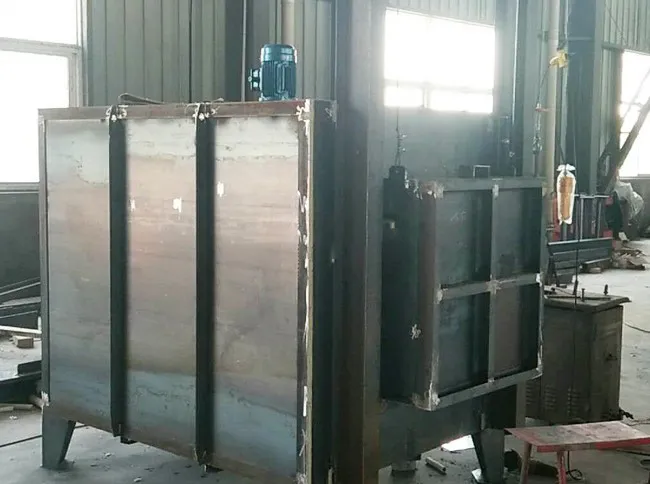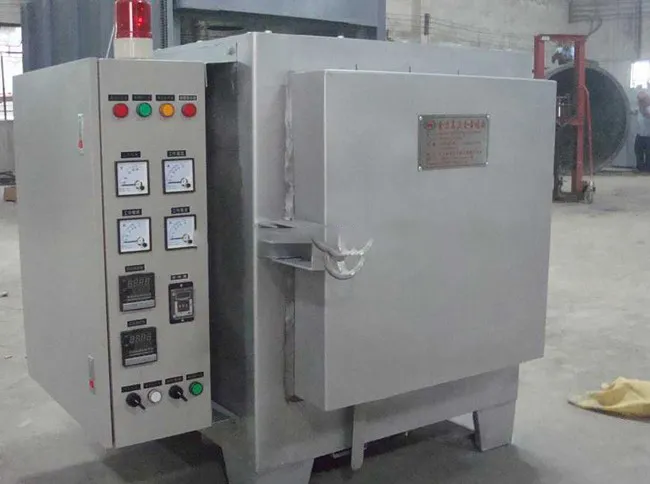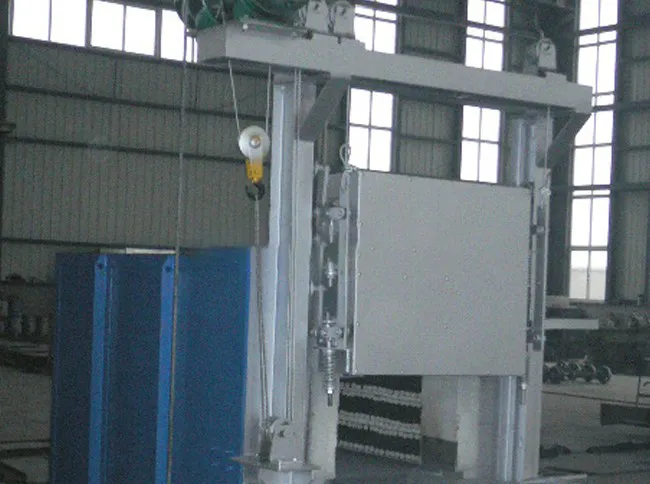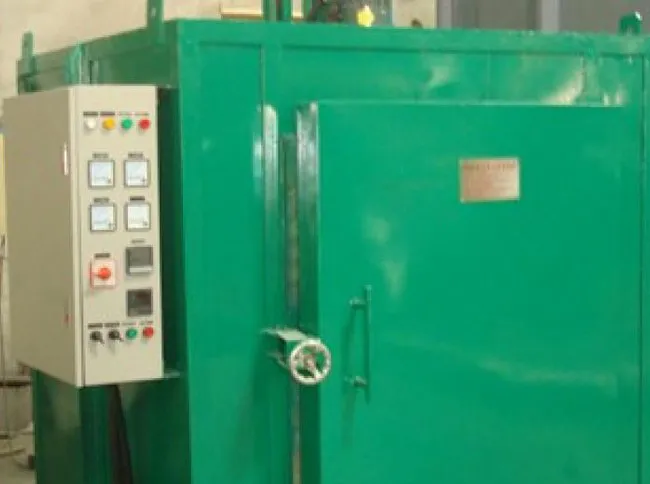- Vacuum furnace & oven
- Annealing Furnace & Oven
- Tempering furnace & oven
-
Carburizing furnace & Ovens
-
Bell Type Furnace
-
Pit Type Furnace & Well Type Furnace
-
Box Furnace & Chamber Furnace
-
Car Bottom Furnace & Bogie Hearth Furnace
-
Nitriding furnace & Ovens
-
Melting furnace & Ovens
- Quenching furnace & Ovens
-
Rapid quenching furnace & Ovens
- Forging furnace & Ovens
- Bright heat treatment furnace & Ovens
Box-type tempering furnace & Ovens
Heat treatment furnace manufacturer,Jiangsu Hongtai Industrial Furnace Technology Co., Ltd
Box-type tempering furnace is a standard cycle operation box-type furnace, the top of the furnace is installed with hot air circulation fan, mainly for alloy steel products, all kinds of metal parts tempering heat treatment.
Box-type Tempering Furnace & Ovens
Versatile Batch Tempering Solutions for Enhanced Material Properties and Stress Relief
Product Introduction
Our Box-type Tempering Furnaces & Ovens are highly versatile and widely used industrial heat treatment systems designed for the precise tempering of metal components after hardening or quenching. Tempering is a critical process that reduces the brittleness of hardened steel, increases its toughness and ductility, and relieves internal stresses, while maintaining desired hardness levels. The box-type design offers flexibility for batch processing of various component sizes and shapes. Equipped with advanced heating elements and forced air circulation systems, these furnaces ensure excellent temperature uniformity throughout the workload, which is essential for achieving consistent and predictable material properties. They are ideal for a broad range of applications in industries such as automotive, aerospace, tool manufacturing, and general machinery, where specific combinations of hardness, toughness, and ductility are required.
Core Advantages for Versatile Tempering
- Versatile Batch Processing: Ideal for handling a wide variety of component sizes and shapes in batch operations, offering high flexibility.
- Precise Temperature Control: Advanced control systems ensure accurate and stable temperature profiles, critical for achieving desired hardness, toughness, and ductility.
- Excellent Temperature Uniformity: Equipped with forced air circulation, guaranteeing uniform heat distribution throughout the load, preventing hot or cold spots and ensuring consistent results.
- Enhanced Toughness & Ductility: Effectively reduces brittleness of hardened components, improving their resistance to impact and fracture.
- Stress Relieving: Relieves internal stresses induced during hardening or machining, preventing cracking and improving dimensional stability.
- Energy Efficient: Optimized insulation and heating elements minimize energy consumption, reducing operational costs.
- Automated & Safe Operation: Integrated PLC control with comprehensive safety interlocks, real-time monitoring, and data logging for reliable and secure operation.
Technical Specifications
| Parameter | Unit | Range/Value | Notes |
|---|---|---|---|
| Maximum Working Temperature | °C | 150 - 750 | Typical tempering temperature range |
| Heating Method | - | Electric, Gas-fired | Selectable based on energy source availability |
| Atmosphere Control | - | Air, Inert Gas (N2, Ar) | For bright tempering or to prevent oxidation |
| Rated Power/Fuel Consumption | KW / m³/h | Varies | Efficient heating systems |
| Working Chamber (W×H×D) | mm | Customizable | Available in various sizes and configurations |
| Temperature Uniformity | °C | ±3 (typical) | Ensures consistent tempering results |
| Control Accuracy | °C | ±1 | Advanced PID control |
| Circulation Method | - | Forced Air Circulation | Ensures excellent temperature uniformity |
| Control System | - | PLC + Touchscreen HMI | Advanced automation and data logging |
| Safety Features | - | Over-temperature protection, Door interlocks, Emergency shutdown | Ensures safe operation |
Working Principle
Box-type tempering furnaces operate on the principle of heating metal components to a specific temperature below their critical point to modify their microstructure and mechanical properties. This process, known as tempering, is typically performed after hardening or quenching to reduce brittleness, increase toughness and ductility, and relieve internal stresses. The box-type design refers to the rectangular or square shape of the heating chamber, which allows for batch processing of components.
Components are loaded into the furnace chamber, often on trays or fixtures. The furnace then heats the components to the desired tempering temperature, which can range from 150°C to 750°C, depending on the material and desired properties. To ensure excellent temperature uniformity, which is crucial for consistent tempering results, these furnaces are typically equipped with powerful forced air circulation fans. These fans circulate the heated air throughout the chamber, ensuring that all parts of the load receive uniform heat treatment. This convective heat transfer is highly efficient and effective for achieving precise temperature control.
During the soaking period at the tempering temperature, the unstable martensitic structure (formed during quenching) transforms into a more stable and tougher microstructure. After the soaking period, components are typically cooled in air or a controlled atmosphere. The entire process is managed by advanced PID controllers, which maintain the set temperature with high accuracy, ensuring repeatable and high-quality tempering results for a wide range of industrial applications.
Process Flow
Loading Components
Hardened components are loaded into the box-type furnace chamber for batch processing.
Heating to Tempering Temperature
Furnace heats components to the precise tempering temperature with forced air circulation for uniformity.
Soaking Period
Components are held at the tempering temperature for a specified duration to allow microstructural transformation and stress relief.
Controlled Cooling & Unloading
Components are cooled in a controlled manner (often in air) and then unloaded for further processing.
Solving Customer Pain Points
Reducing Brittleness of Hardened Parts
Our box-type tempering furnaces effectively reduce the inherent brittleness of hardened steel, transforming it into a tougher and more ductile material, crucial for impact resistance and reliability.
Achieving Specific Hardness-Toughness Balance
Precise temperature control allows for fine-tuning of mechanical properties, enabling manufacturers to achieve the exact hardness-toughness balance required for their specific applications.
Minimizing Internal Stresses & Distortion
The tempering process effectively relieves internal stresses induced during hardening, preventing cracking, warping, and improving the dimensional stability of components.
Ensuring Uniform Properties Across Diverse Loads
Forced air circulation and excellent temperature uniformity ensure that all components within a batch, regardless of size or shape, are tempered consistently, leading to uniform mechanical properties and reduced rejects.
Optimizing Energy Consumption for Batch Processes
With efficient insulation and heating systems, our furnaces minimize energy usage during the tempering cycle, contributing to lower operational costs and environmental sustainability for batch operations.
Process Repeatability & Quality Assurance
Advanced PLC control and data logging capabilities ensure consistent and repeatable tempering results, meeting stringent quality standards for critical components in batch production.
Customer Success Stories
A manufacturer of industrial cutting tools significantly extended the lifespan of their products by 25% after implementing our box-type tempering furnace, noting improved toughness and reduced chipping.
Customized Services
We offer comprehensive customization services for our box-type tempering furnaces, including tailored chamber dimensions, specific heating methods (electric or gas), and integration with existing heat treatment lines. Our engineering team works closely with clients to design solutions that precisely meet their unique material types, component sizes, desired mechanical properties, and production throughput requirements, ensuring optimal performance and seamless integration into their heat treatment processes.
Related Keywords
box type tempering furnace, industrial tempering oven, batch tempering, heat treatment tempering, stress relieving furnace, annealing furnace, precision heat treatment, metallurgical equipment, steel tempering, alloy tempering, controlled atmosphere tempering, forced air circulation furnace, general purpose tempering
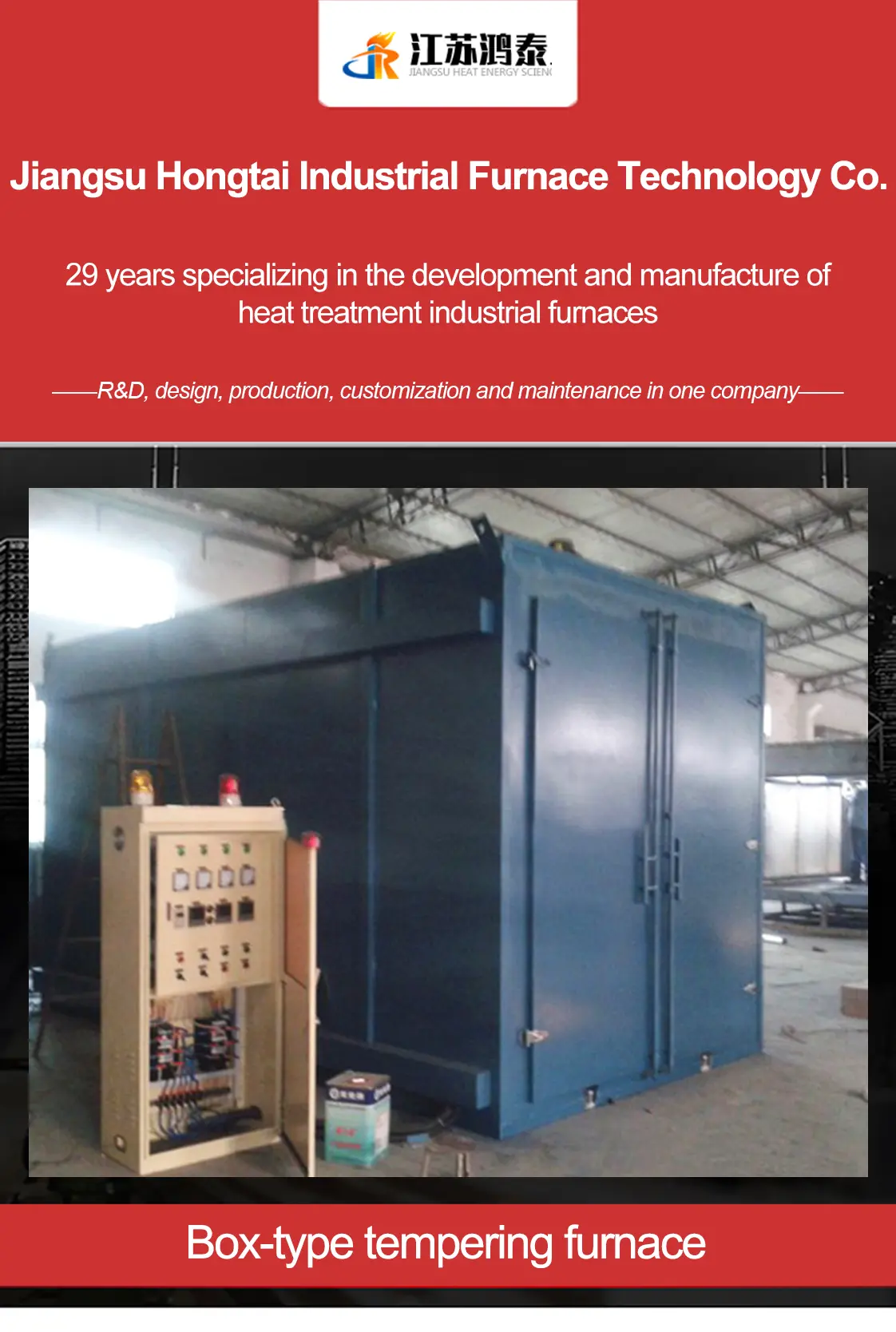
Industrial Value and Application Products
- Automotive Molds: Tempering of H13 steel molds to improve toughness and extend service life for stamping cycles.
- Aviation Fasteners: Tempering of high-strength alloy steel fasteners to achieve desired tensile strength and elongation for aerospace applications.
- Powder Metallurgy Gears: Vacuum tempering of Fe-Cu-C stainless steel powder gears to increase density, hardness, and wear resistance.
- General Machine Parts: Various components requiring stress relief and property optimization after hardening.
- Tools and Dies: Tempering of cutting tools, punches, and dies for enhanced durability and performance.
Usage:
Box-type tempering furnace is a standard-type cycle operation box-type furnace, the top of the furnace is installed with hot air internal circulation fan, mainly for alloy steel products, all kinds of metal parts tempering heat treatment, as well as aluminum alloys, copper solid melting, annealing, aging and other light alloy heat treatment.
Adopting the energy-saving electric furnace made of high-quality anti-inflammatory fiber. Furnace and temperature control cabinet accessories to use, can automatically or manually control the temperature of the furnace.
The equipment is equipped with two thermocouples for over-temperature protection and control of the working temperature of the furnace chamber. It can be equipped with computerized table or computer control to do multiple temperature measurement to ensure the quality of products according to the requirements of users.
Structure:
Box-type tempering furnace shell by the national standard steel plate and steel welding manufacturing, furnace lining using high quality aluminum energy-saving insulation brick masonry, combined with aluminum silicate fiber cotton composite lining insulation. Box-type tempering furnace electric heating element for the long life design, high temperature resistance made of 0Cr25Al5, arranged on both sides of the furnace chamber and the bottom of the furnace.
Furnace door by electric or hydraulic lift, small box-type tempering furnace can also be used to crank the door, the door opens with a circuit breaker protection device to stop sending electricity heating. Adopting microcomputer temperature control system to control the tempering process with high precision, fully automatic completion of the whole process of tempering heat treatment from the furnace to the furnace. We can design and manufacture various chamber sizes and different specifications of box-type tempering furnace for customers.
